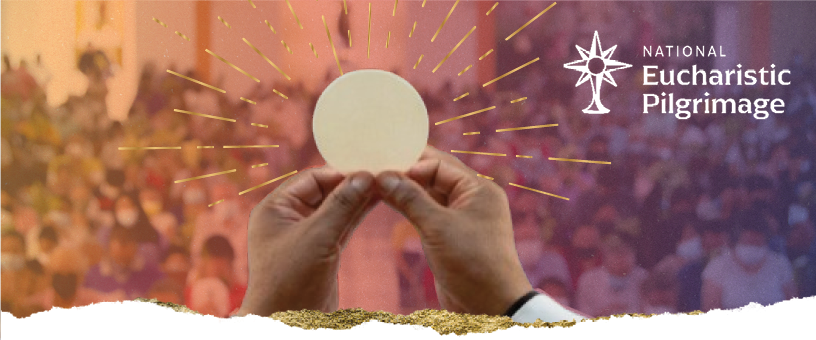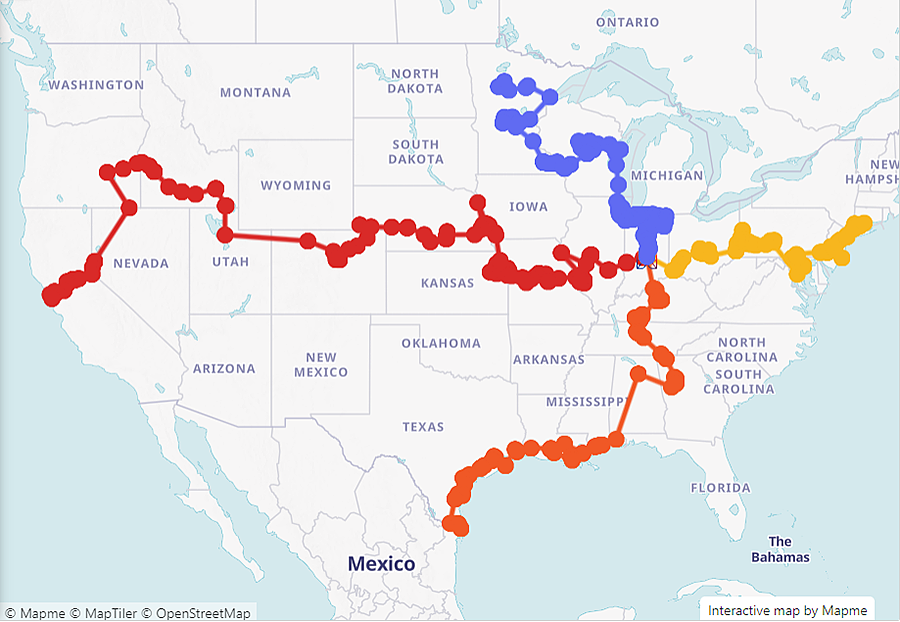National Eucharistic Pilgrimage swings through diocese
by Diocese of Des Moines | April 17, 2024

Four routes.
Sixty days on the road.
Six thousand five hundred miles traveled.
Jesus in the Eucharist will be the focus of four pilgrimages working their way from the North, South, East and West to Indianapolis in the middle of the country this summer for the culmination of a three-year revival with a Eucharistic Congress.
One of those four routes is coming through the Des Moines Diocese.

The path, dubbed the St. Junipero Serra Route, kicks off May 18 in San Francisco and winds its way across the Rocky Mountains and Great Plains on foot. The Serra route will be the longest and most challenging branch of the National Eucharistic Pilgrimage—covering over 2,200 miles.
Plans are being made to give the faithful many opportunities to see, pray, and be a part of the pilgrimage as it comes through Iowa June 23-25.
“We invite individuals and families to take some time, bring their families and friends, and embark on their own pilgrimage to see the Lord along the route in the western and far southwest part of our Diocese,” said John Huynh, a diocesan coordinator.
Bishop William Joensen will celebrate an outdoor bilingual Mass at the Tom Hanafan River’s Edge Park in Council Bluffs on Sunday, June 23. After Mass, he will accept the Eucharistic Lord from Omaha Archbishop George Lucas.
Bishop Joensen will bring the Eucharist into Iowa and begin the local portion of the pilgrimage to its first stop at Corpus Christi Parish/Queen of Apostles Church in Council Bluffs.
Why does the Church do processions?
It started in 1264 with a desire to have a full day focused solely on the Eucharist.
“It is because Pope Urban IV promulgated the celebration of the Solemnity of Corpus Christi. The Eucharist was honored on Corpus Christi with processions,” said Father Luis Mejia, pastor of Corpus Christi Parish.
“The priest would carry the Blessed Sacrament through the city, stopping several times for benediction. This custom is still encouraged and practiced in many countries throughout the world,” he said. “Also, it is a great way to tell people who we are. We are Eucharistic people, who bear witness outside of the periphery.”
Opportunities for the faithful to celebrate Mass, adoration, benediction, and walk with Jesus as the Apostles did, will be available as Jesus in the Eucharist moves from Council Bluffs to Holy Rosary Parish in Glenwood, St. Patrick in Imogene, and St. Mary in Shenandoah.
The U.S. bishops hope that, through the three-year Eucharistic Revival and the four pilgrimage routes crisscrossing the country to one central Eucharistic Congress, Christ will draw the faithful into greater unity as a people, as a nation, and as a Church.
The Catholic Church holds Eucharistic processions for two reasons, said Father Trevor Chicoine, diocesan Vicar for Divine Worship.
One reason Eucharistic processions are held is “to give praise and honor to God because we love Jesus. We want to adore him and be with him,” he said.
A second reason is “to give public witness to our faith. It’s not just what we do in church that’s important but it’s what we do out on the highways and byways of life. So, we take our faith, we take the Eucharist out there and we’re not afraid to be seen as Catholics and walk with Jesus,” he said.
Learn More About the Procession